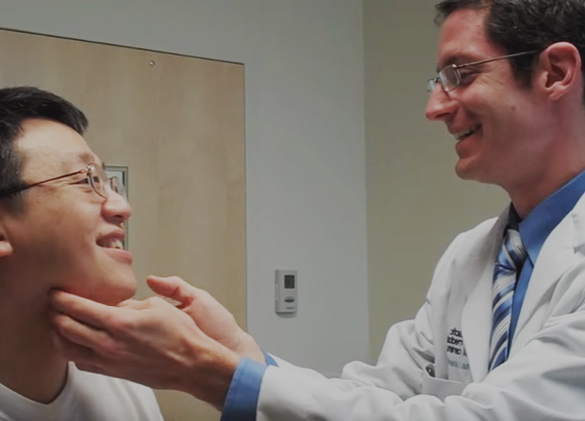What is a pollybeak deformity and what can be done to correct it? I recently discussed this question in this RealSelf post. I wanted to discuss this problems in more depth and illustrate how it can be corrected.
What is a pollybeak deformity?
A pollybeak deformity occurs when the area above the tip of the nose on the bridge (also called the supratip) is the highest part of the nose when seen from a profile view. The pollybeak term comes from how the nose looks like a parrot beak.
Causes of pollybeak deformity
A pollybeak deformity can occur from a variety of causes. Let's go through some common etiologies of the condition.
Excess residual septal cartilage
A very common cause of pollybeak deformity occurs when someone has a nasal hump taken down, but the surgeon doesn't fully address the whole length of the nose. This leaves excess height of the septum which leads to increased fullness in the supratip area.This patient had a prior rhinoplasty to remove a nasal hump but was left with a residual pollybeak that I was able to treat during her revision rhinoplasty.

Prominent nasal tip cartilages
Other patients have increased fullness to their supratip because of the prominence of their tip cartilages.The patient below had such this problem that I treated during his revision rhinoplasty procedure. By performing a cephalic trim to his lower lateral cartialges, the patient's fullness is much improved. The middle photo shows the patient's preoperative morphing.

Subcutaneous scar tissue and tip drooping
A pollybeak deformity can also result from prior surgery if the overlying skin does not adequately reappose the underlying tip cartilages. This allows scar tissue to develop in the area. When recognized in the early postoperative period this scar can be treated with an injection of steroid to help soften the scar. If the scar matures, however, surgery is required to remove the scar tissue.Another etiology is that the nasal tip can become droopy during the healing process if it doesn't have enough remaining support. As the tip lowers the supratip then becomes the highest point of the profile line.
The patient below had both causes of pollybeak. By improving the patient's tip projection and by removing the scar tissue under her tip skin a much improved profile line was created.

Relative excess due to over-resection of the bridge
A pollybeak can be caused not by excess supratip tissue but by over-resection of the bridge above the supratip. Treatment focuses on rebuilding the dorsum to rebalance the profile line.


